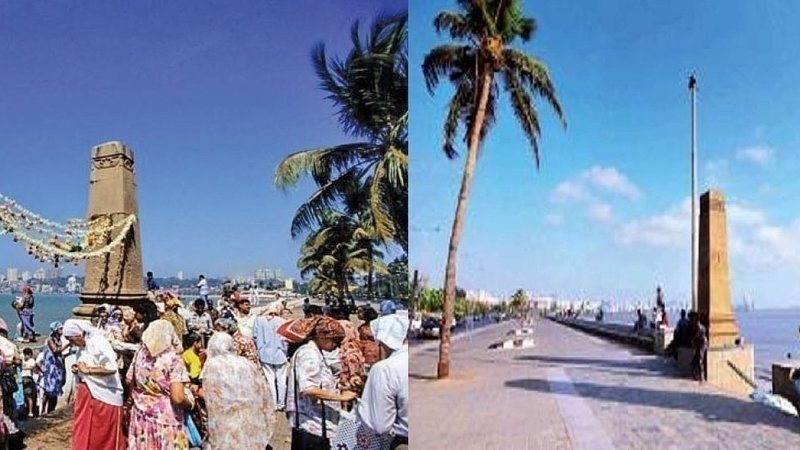Urban planners, activists note glaring errors in draft Mumbai DP
Urban planners and activists have pointed out several glaring errors in the revised draft of the DP 2014-2034 released last week, especially in the maps appended to it. Many of these mistakes have been carried over from the previous draft.
Urban planners have pointed out that while a portion of the Coastal Road is supposed to be under Girgaum Chowpatty, the stretch is shown as a road in the map. “The alignment of the Coastal Road is clearly shown as a road that runs through several buildings and the tower of silence. These are very careless errors that must be corrected,” said Pankaj Joshi, executive director of the Urban Design Research Institute.
Joshi also pointed out that in another section of the Coastal Road running parallel to the Bandra promenade, the maps show a certain land mass adjoining the road in the sea, which has been marked in white. “The colour white indicates property. Why should there be a land mass out in the sea? These kind of errors, if not fixed, can lead to misuse in the future,” Joshi said.
Pointing out more mistakes relating to natural areas marked in the DP, Joshi said some of them appeared to be deliberate. As an example, he said that in Versova, many plots have been marked in a region listed among natural areas. “Several plots as well as a road has been marked in the area that comprises mangroves.
These areas contain shifting sands and help drain out excess water from the land out into the sea. Development on these areas can have disastrous ecological impacts on the city,” said Joshi. Similarly, an open ground in Manish Nagar in Andheri has been marked in white, which signifies property.
Defending their stand, officials in the DP department said the alignment of the Coastal Road shown in the draft is a tentative one. “The alignment shown is as per what was given to us by the coastal road cell. In case of Girgaum Chowpatty, it is tentative and a tunnel is supposed to be built there,” said the official. Referring to the land mass shown in the Bandra Promenade, BMC officials admitted that the blue colour to mark the sea is missing in some places along the coast.
When asked about the plots and road marked in natural areas — where no development is allowed — the official said, “We still have to see if the proposed road has anything to do with the interchange of the Coastal Road in that area,” he said. The official also admitted that most of the recreation grounds have not been marked as RGs in the layout.
According to Perry Road Residents’ Association Advanced Local Management (ALM), a road will cut through St. Andrews’ Church in Bandra (West) as per the revised draft. “Before and after the last revision, our organisation sent about 3,500 suggestion letters by parishioners and students. We also made our MP and MLA write letters. Yet, they were not considered,” said Anil Joseph, president of the Association, adding that residents should boycott local councillors during next year’s polls.
Shyama Kulkarni, trustee of Action for Good Governance and Networking in India, said the draft mentions eight-lane roads in the Aarey Colony, which, he said, could destroy mangroves. “Why are elevated metros being planned for suburbs and underground metros for the city? The population density in suburbs is more than that in the city. The revised DP draft also does not show any widening of roads,” Kulkarni said.
According to Nicholas Almeida, co-founder of The Watchdog Foundation, places of historical importance too have been marked wrong. According to the Foundation, the Max Muller Bhavan has been classified as a recreation ground. Mahim Dargah, which was shown as an orphanage, continued to be the same in the updated DP.
Jama Masjid in Mangaldas Market and Mumbadevi Temple at Bhuleshwar were shown as commercial areas while Siddivinayak Temple in Prabhadevi and Haji Ali Dargah were marked as residential areas.
Mahalaxmi Mandir and the Congress (I) office next to Gandhi Bhavan were shown as residential areas while Hutatma Chowk at Fort, earlier classified as a park, was classified as residential area.
The Keneseth Eliyahoo Synagogue of Kala Ghoda and the Parsi Fire Temple were not marked in the map. Lady of Fatima Church, Sewri, was shown under Disaster Recovery Rehabilitation & Resettlement zone and Mother of Jesus Church, Antop Hill, as a parking lot.
Civic officials admitted to many religious structures not being shown on the latest draft and others being put under the Residential-Commercial classification. “This issue has been considered in the light of DP 1991, current status, legal provisions and court orders. The draft 2034 would have no reservation category as religious structures. The structures are reflected in one of the five zones — Residential, Commercial, Industrial, No Development Zone or Natural Area,” an official said.
Citizens have been given time till July 29 to submit their objections and suggestions to the DP to the civic body.
Published on Indian Express





